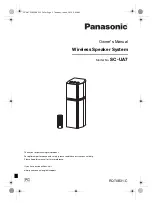
110
27. Troubleshooting the AKB Circuits
7
1
3
1
D736
1
FROM
FOCUS
BLOCK
C732
R732
G2
SG731
Q733
R741
R742
L731
R736
R739
+200V
D732
C735
CN731
FROM
A BD.
CN204
R736
C734
R737
R746
Q734
R747
D735
R743
CN732
IkR
IkB
9V
CN737
TO FOCUS
BLOCK
C737
R744
CN736
CN735
CN734
TO
G BOARD
CN503
FIGURE 27-1 - CRT DRIVE (CG)
1
R733
Q731
R735
R753
CLK
C733
D731
Q722
D733 D734
CN733
G
IK
TO CR
BOARD
CN702
TO CB
BOARD
CN762
SG732
4
11
10
9
8
7
6
5
1
F
G1
G2
G1
k
H
H G1 G1
CG BOARD
7
6
9
9
7
6
6
7
27.1TVP14
6/19/02
Troubleshooting AKB
The introduction of self-diagnostics was a great feature to assist in analyzing video problems. Prior to that,
several checks needed to be made to verify whether the AKB circuit was the cause of no video. The timer LED
simply blinked at one-second intervals, indicating a problem but not where it was located. High voltage and
vertical deflection had to be checked first. The newer models incorporating diagnostics will flash the timer LED
at intervals of five, followed by a three second separator. Any failures in vertical deflection or high voltage will
appear in the diagnostics well before AKB is expected.
There are three primary causes for an AKB error to appear:
1. One or more of the cathodes is drawing insufficient or no current.
2. One or more of the return pulses are not making it back to the AKB circuit.
3. The AKB circuit is malfunctioning.
Different approaches to diagnosing this problem are available. Some technicians have developed practical
methods to accomplish this and should continue using them if they are effective. The troubleshooting steps in
this chapter are a refined process. AKB problems should be located in less than 10 minutes.












































